Abstract
The peripheral and central components in sustained clonus were investigated. The excitability of the motoneurons responding to maintained stretch by clonus was examined by tendon taps, trains of vibratory stimuli and by H-reflex afferent volleys. Every burst of clonic discharge of the motoneurons was shown to be followed by a refractory period, which was followed by a shorter excitatory period. It was concluded that the motoneurons responding clonically to a continuous stretch cannot respond until their excitability has been regained after the refractory period. Attempts to change the rate of clonus in various ways failed to do so. Whether motoneurons of clonic muscles tend to respond maximally to other Ia volleys at the rate of clonus was examined by applying repeated taps to the tendon at rates from 1 to 15 Hz. There was a maximal response at the rate of clonus. Inputs other than those induced by stretch cause clonus; examples of cutaneous inputs causing it are given.
Full text
PDF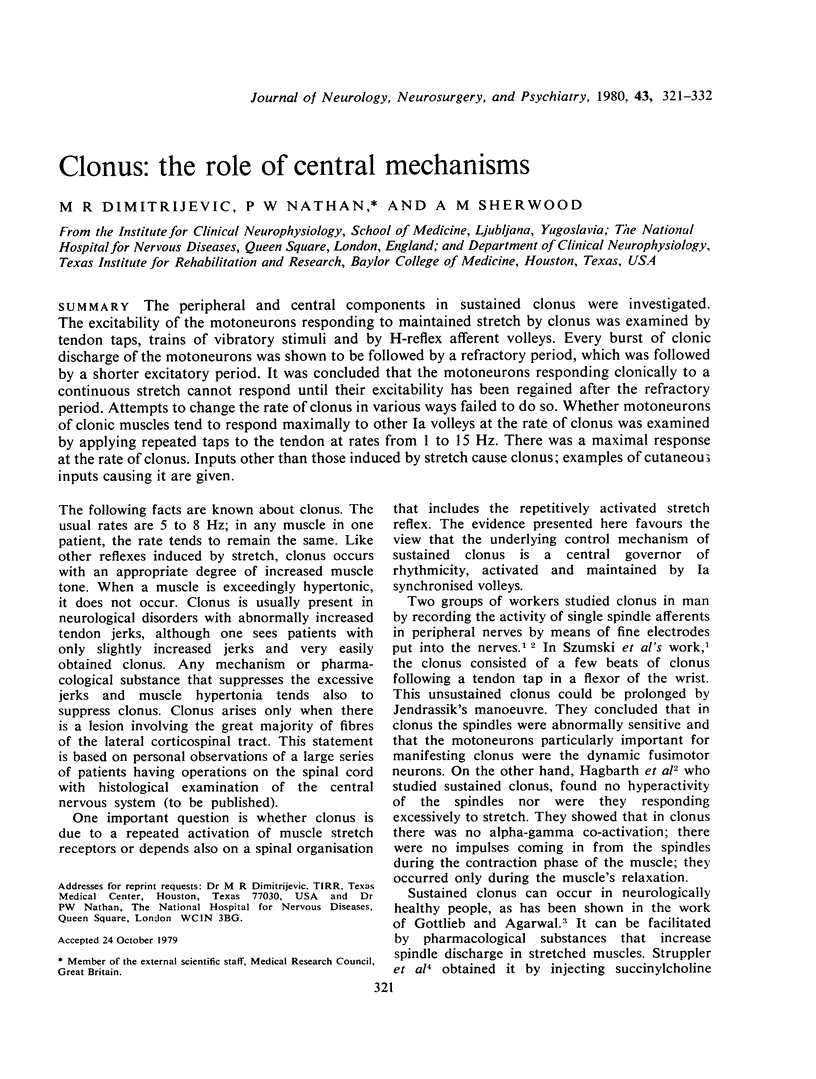
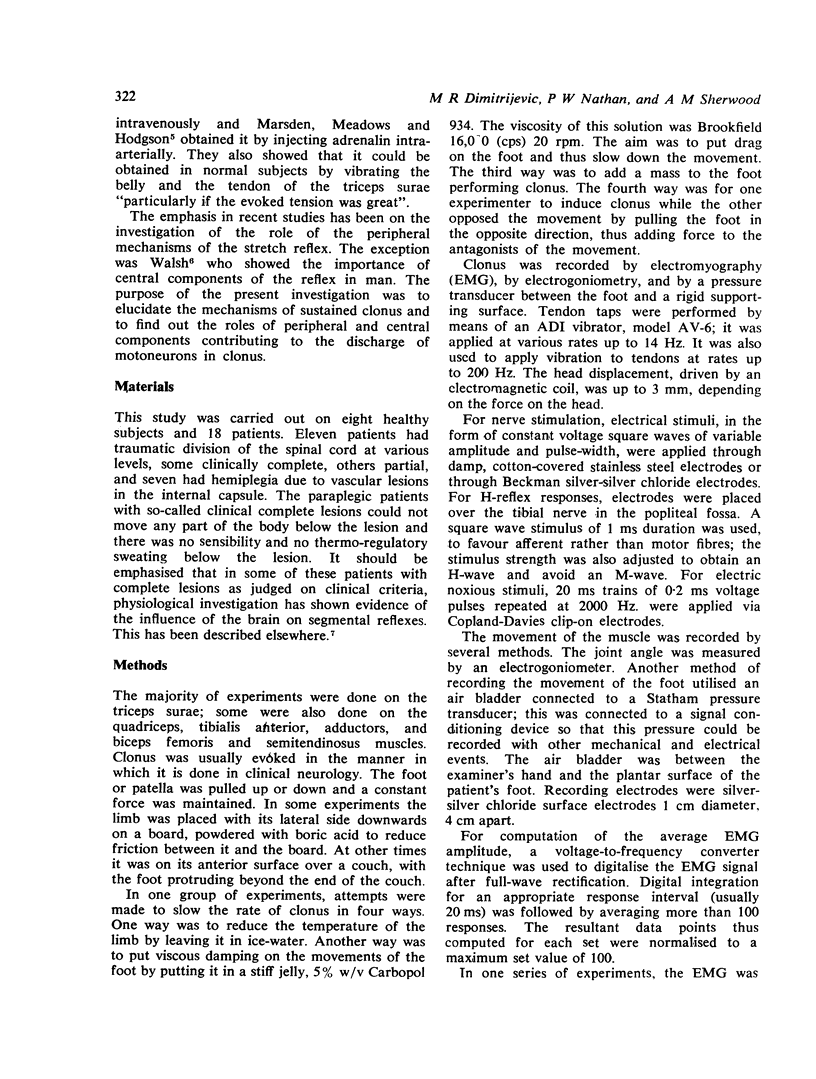
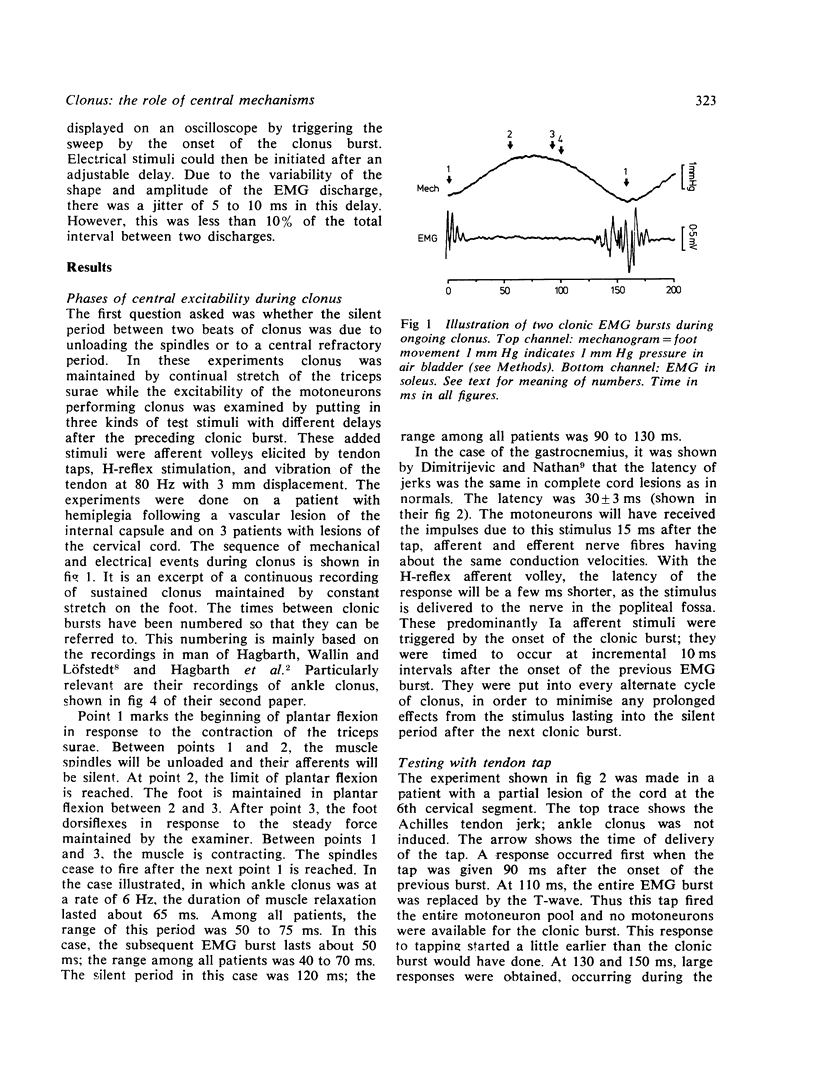





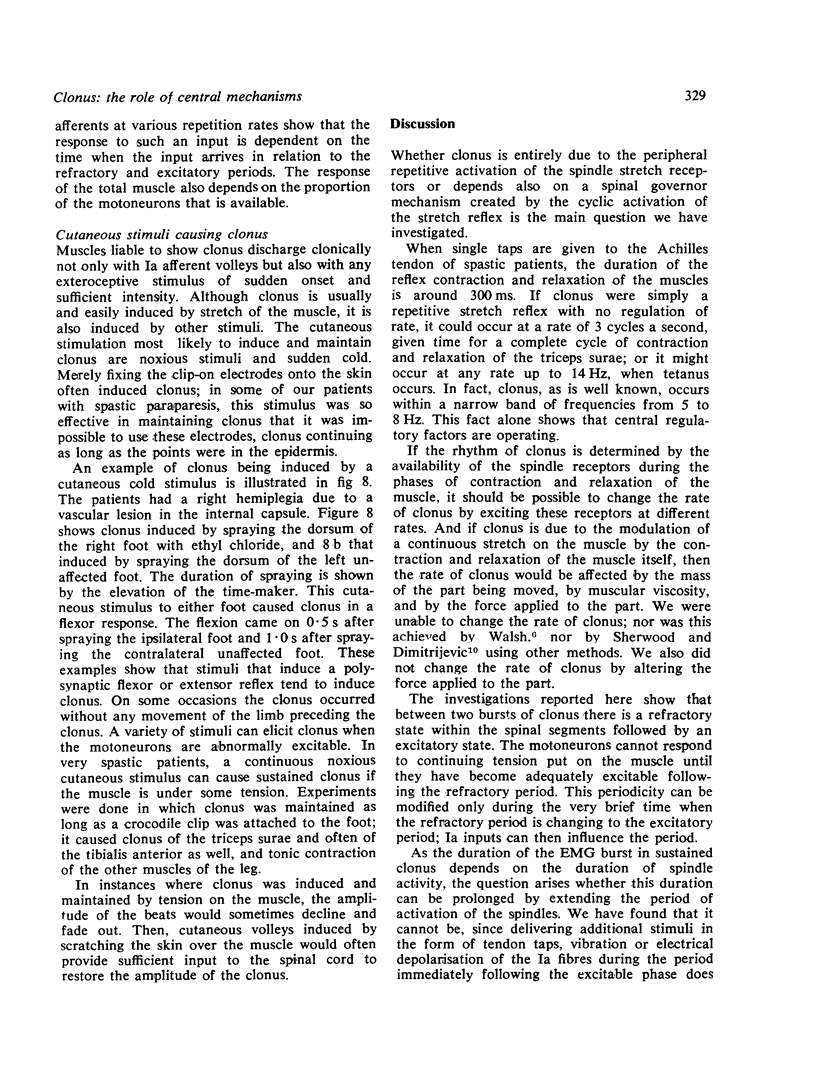

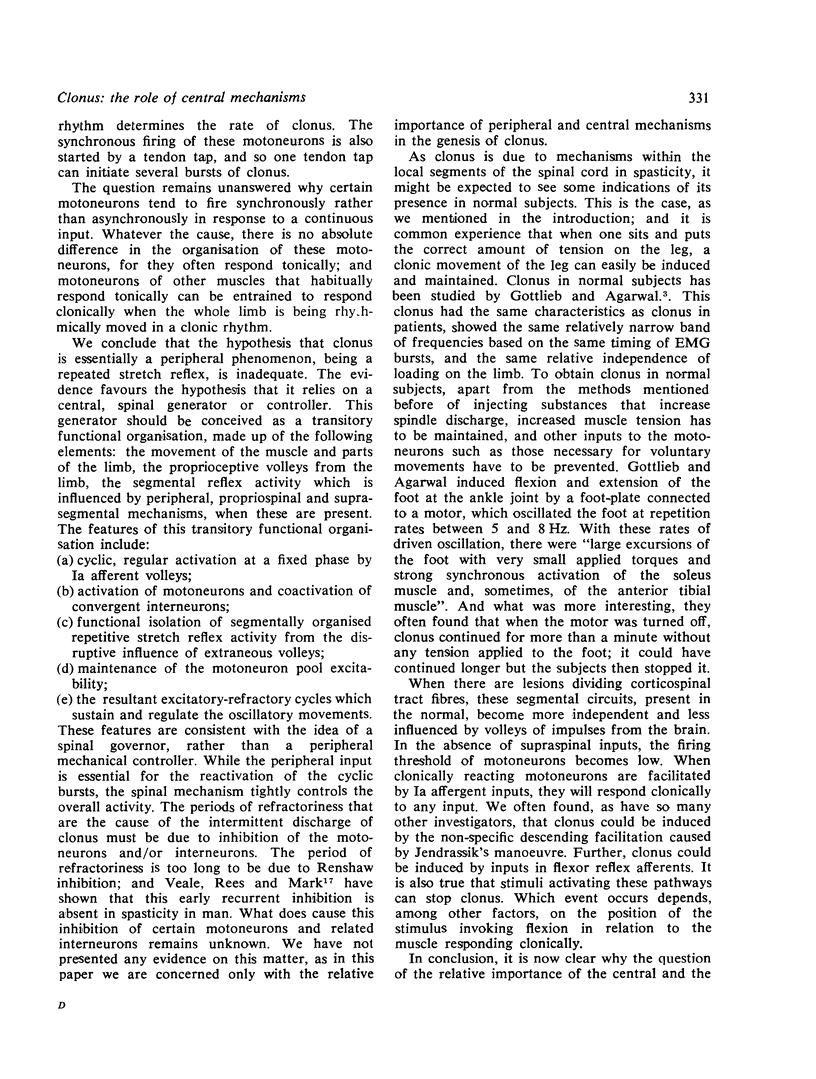

Selected References
These references are in PubMed. This may not be the complete list of references from this article.
- Dimitrijevic M. R., Spencer W. A., Trontelj J. V., Dimitrijevic M. Reflex effects of vibration in patients with spinal cord lesions. Neurology. 1977 Nov;27(11):1078–1086. doi: 10.1212/wnl.27.11.1078. [DOI] [PubMed] [Google Scholar]
- Dimitrijevíc M. R., Nathan P. W. Studies of spasticity in man. 2. Analysis of stretch reflexes in spasticity. Brain. 1967 Jun;90(2):333–358. doi: 10.1093/brain/90.2.333. [DOI] [PubMed] [Google Scholar]
- Gottlieb G. L., Agarwal G. C. Physiological clonus in man. Exp Neurol. 1977 Mar;54(3):616–621. doi: 10.1016/0014-4886(77)90260-6. [DOI] [PubMed] [Google Scholar]
- Hagbarth K. E., Wallen G., Löfstedt L. Muscle spindle activity in man during voluntary fast alternating movements. J Neurol Neurosurg Psychiatry. 1975 Jul;38(7):625–635. doi: 10.1136/jnnp.38.7.625. [DOI] [PMC free article] [PubMed] [Google Scholar]
- Hagbarth K. E., Wallin G., Löfstedt L., Aquilonius S. M. Muscle spindle activity in alternating tremor of Parkinsonism and in clonus. J Neurol Neurosurg Psychiatry. 1975 Jul;38(7):636–641. doi: 10.1136/jnnp.38.7.636. [DOI] [PMC free article] [PubMed] [Google Scholar]
- Marsden C. D., Meadows J. C., Hodgson H. J. Observations on the reflex response to muscle vibration in man and its voluntary control. Brain. 1969;92(4):829–846. doi: 10.1093/brain/92.4.829. [DOI] [PubMed] [Google Scholar]
- STRUPPLER A., SCHULTE F. J., SCHEININGER R., KUKKU M. [Electromyographic research on spasticity and rigor. The behavior of the motoneurons during a chemically-induced increase in the activity of the muscle spindles]. Dtsch Z Nervenheilkd. 1961;183:134–147. [PubMed] [Google Scholar]
- Szumski A. J., Burg D., Struppler A., Velho F. Activity of muscle spindles during muscle twitch and clonus in normal and spastic human subjects. Electroencephalogr Clin Neurophysiol. 1974 Dec;37(6):589–597. doi: 10.1016/0013-4694(74)90072-8. [DOI] [PubMed] [Google Scholar]
- Walsh E. G. Clonus: beats provoked by the application of a rhythmic force. J Neurol Neurosurg Psychiatry. 1976 Mar;39(3):266–274. doi: 10.1136/jnnp.39.3.266. [DOI] [PMC free article] [PubMed] [Google Scholar]


